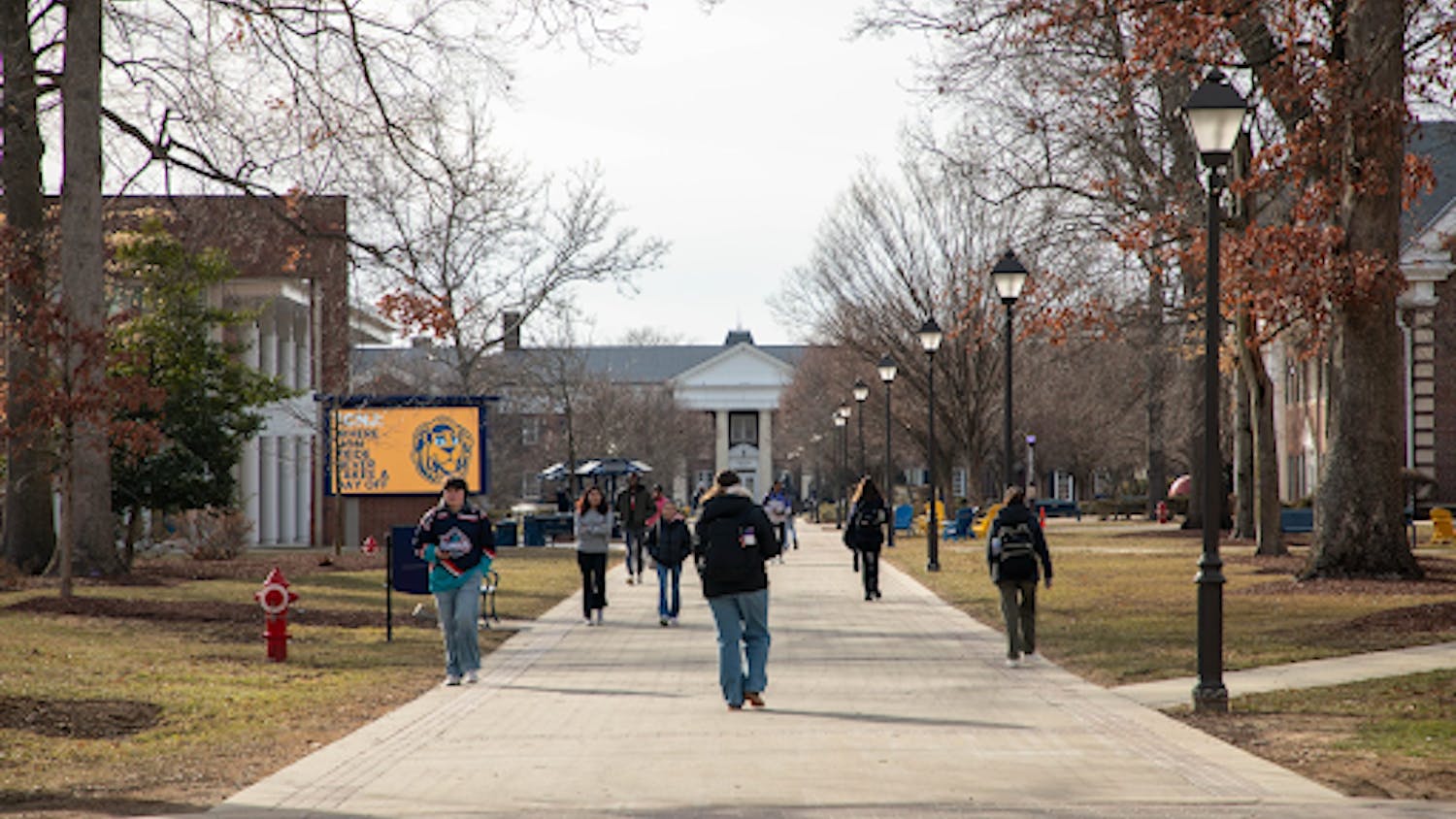By Sydney Shaw
News Editor
A wicker rocking chair rests out on the porch, shaded by the veranda above. A short wooden railing wraps halfway around the colonial farmhouse, the backdrop to a few high-reaching shrubs and wildflowers. Chalk-white chimneys rise up amid chocolate-brown shingles on the roof.

The front yard is vast and open, peppered with a few solid, old trees and a flagpole stuck into the ground. It’s a quaint little home on a picturesque piece of land.
But that was back in 1960 — the same year the College purchased the building.
Today, the Green Farmhouse is utterly dilapidated. Its two doors and six windows have been sealed off and painted a forest green color. The porch is gone, along with its pretty wooden skirting. Both verandas were lost long ago. The shingles on the roof are sparse and the paint has mostly chipped away, leaving nothing but the remnants of the building’s famous Flemish bond brickwork.
That’s why the house has been placed on the Preservation New Jersey 2015 list of the “10 Most Endangered Historic Sites,” and it’s why The Friends of the William Green Farmhouse is finally putting its foot down.
“What would your neighbors say if you bought a house and let it go derelict for 55 years?” asked Billy Joe O’Neal, Jr., vice president of The Friends.
The Friends is a nonprofit organization founded in 2000 with the sole mission of working cooperatively with the College to restore the farmhouse.
In 2007, at the urging of The Friends and the intervention of State Assemblyman Reed Gusciora, the College spent around $100,000 to mothball the farmhouse to ensure no further deterioration would occur while funds were being raised for its rehabilitation. A few years later, The Friends requested permission to seek a lease for the house.

“We were denied that request and told that the College has no interest in supporting our effort to restore the house to its former glory, an effort that legally lies in their lap, not ours,” O’Neal said in a press release.
In 2012, the estimated cost of full restoration was around $2.6 million.
“Other colleges have historic buildings like this one on their properties,” said Robert Colonna, a senior history and secondary education double major. “Princeton has old buildings, Rutgers does… The difference is that those buildings have been taken care of and renovated into student centers or alumni houses. Those buildings serve a purpose.”
Colonna’s internship through the Ewing Preservation Society is to do research and track the genealogy of the people who lived in the farmhouse. He is also in the process of building a three-dimensional model of the farmhouse.
“I think the College is forgetting that the Green Farmhouse pre-dates our country,” Colonna said. “We think of our country and our government and even the College as these old, important institutions, meanwhile, this house has been around through all of it.”
A Facebook page now exists to bolster support for the farmhouse’s renovation. It is called “TCNJ’s Green Farmhouse: Help Save it.”
“There are many pressing priorities at the College — more so than the College can fund,” spokesman Dave Muha said. “Right now, we are focused on raising $40 million dollars, half of which will be used for student scholarships. The link for students there is really direct.”
Muha acknowledged the historic importance of the farmhouse. According to Preservation New Jersey, the brick portion of the house is one of the oldest and northernmost examples of patterned brick architecture in New Jersey.
“The purpose of my internship isn’t to try to save the farmhouse,” Colonna said. “But I am hoping that people will see my work and realize that something needs to be done. The College thinks students don’t care about the house, but maybe seeing my work will create a snowball effect and more and more people will care.”
According to O’Neal, the Green family’s land stretched from where Green Hall stands (named after James M. Green, former principal of the New Jersey State Normal School, unrelated to William Green) to what is now Crescent Avenue in the neighborhood across from the College’s Green Lane entrance.
The Friends has a more extensive history of the property and the Green family on its website, williamgreenhouse.org. It contains an in-depth analysis of the Green family tree, tracing the home from William Green, who built the farmhouse around 1717, to Henry Green, who lost the farm on a peach crop endeavor in 1879.
Paintings of the Green family members, as well as photos and locations of their tombstones, are also available on the website.
“We don’t question the historic value of the farmhouse,” Muha said. “It’s just a reality that dollars are tight.”







